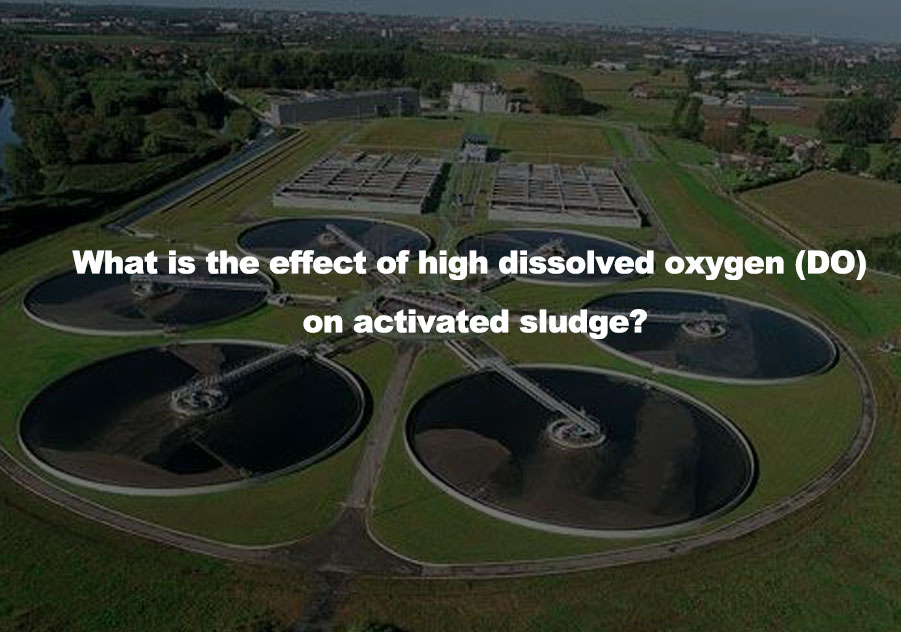 +86-15267462807
+86-15267462807

In the biological sewage treatment process, activated sludge is one of the most important treatment units. It is composed of various microbial communities, which can use organic matter to degrade organic matter in wastewater into CO2 and H2O, and remove inorganic substances such as nitrogen and phosphorus. However, if DO is too high, it will have adverse effects on these microorganisms. Therefore, in the sewage treatment process, attention should be paid to the control of DO.
1. Definition of dissolved oxygen
Dissolved oxygen (DO) refers to oxygen dissolved in water. It is one of the most critical and basic chemicals in water. Oxygen in water comes from the atmosphere and photosynthesis in water. When there is enough dissolved oxygen in water, it maintains the energy supply necessary for the life activities of aquatic organisms. It is also an important substance required for the metabolism of microorganisms in water. Since the oxygen in water is connected to the atmosphere, factors such as temperature, pressure, wind speed, and turbulence will affect the solubility of oxygen. In water, almost all oxygen is dissolved from the atmosphere, and the solubility of oxygen is related to factors such as water temperature, salinity, pressure, and water flow rate. The higher the water temperature, the greater the salinity, and the higher the pressure, the lower the solubility of oxygen. The faster the water flow rate, the higher the solubility of oxygen.

2. What is the impact of high DO on activated sludge?
(1) Inhibit the growth of microbial communities. High DO can cause the internal environment of microorganisms to be disturbed, so that their metabolism is inhibited, thereby hindering the growth of microorganisms.
(2) Change the metabolic pathway of microorganisms. When DO is high, microorganisms tend to use DO as an oxidant and prefer oxygen decomposition to degrade organic matter rather than aerobic respiration. This leads to changes in the metabolic pathway of microorganisms, thereby reducing the efficiency of sewage treatment.
(3) Interfere with the degradation of organic matter. Under high DO conditions, the metabolic pathway of the microbial community is disturbed, resulting in the inability to effectively degrade organic matter in the wastewater. At the same time, due to the decrease in the number of microorganisms, the sewage treatment rate will also be reduced.
3. How to prevent DO from being too high?
(1) Setting a low oxygen zone at the water inlet and adding devices such as sudden discharge ports and mixed oxygen absorbers can effectively control the DO concentration.
(2) Using a dispersed gas feed method to evenly disperse oxygen and provide sufficient oxygen throughout the organic matter degradation stage.
(3) Reduce the number of ventilation times to prevent DO from being too high.
4. Recommended measures to solve the problem of excessive dissolved oxygen (DO)
(1) Regular monitoring of dissolved oxygen: It is recommended to set up an automatic monitoring platform and equip it with dissolved oxygen sensors to regularly monitor the inlet and outlet of the treatment plant to ensure that DO is controlled within a safe range.
(2) Adjust the aeration volume: By appropriately increasing or decreasing the aeration volume, the treatment effect can be optimized. Proper control of the aeration volume can reduce the oxygen concentration and reduce the DO value.
(3) Reduce the sludge return volume: Reasonably reducing the return volume can extend the aeration time, thereby improving the effect of biological denitrification and reducing excessive oxygen use.
(4) Improve the treatment effect of aeration equipment: Appropriately adjust the aeration equipment to enhance the oxygen transmission effect to better control the dissolved oxygen level.
(5) Strengthen employee training: Strengthen employee training, publicize DO control knowledge and skills in the sewage treatment process, make them more familiar with how to use aeration equipment and monitoring instruments, thereby improving the treatment effect.
(6) Sludge adjustment: In order to reduce the impact on the sludge system caused by the above control suggestions, it is recommended to uniformly treat and adjust the sludge to ensure the normal operation of the treatment equipment.